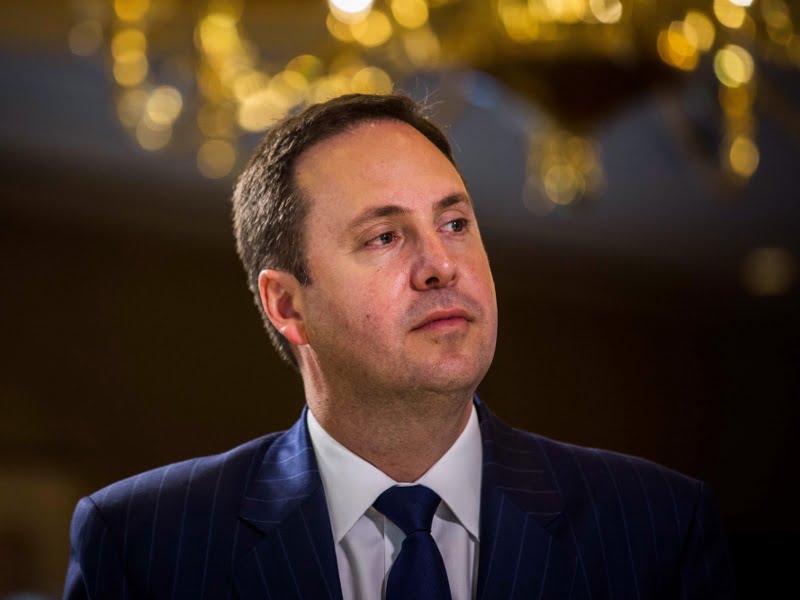Scott Morrison’s first budget will throw almost $2 million to enhance its new “Open for Business” Free Trade Agreement portal, a move it hopes will start plugging the gaps in the massive trade hole left by the end of the mining boom.
It is pushing new trade deals with numerous countries, across a range of sectors, replete with myriad innovation opportunities.
The portal provides comprehensive tariff information and product-specific Australian and international trade data to help businesses assess how their products meet the requirements of a mulitiplicity of “FTAs”.

In keeping with an encouraging technology slant on government websites under the Turnbull government, it has a beta version of the FTA Portal Application Programming Interface (API).
“The API provides developers with easy access to this data and corresponding Portal functionality. The API allows a third party to use and display the data in innovative ways, potentially adding value to the information services of industry peak bodies and government agencies, as well as customs brokers and freight forwarders,” the website notes.
Australia’s FTAs with our main North Asian trade partners China Japan and South Korea – as well as those underway with India, Indonesia and even the frumpy (but still very wealthy EU) were talked up yet again in the budget. Ad nauseum.
Yet they do underscore the endless opportunities available to innovative Australian companies prepared to try their luck in markets where success, as companies such as Blackmores and Bellamy’s, who sell health supplements and diary products respectively, have learned, can come via online sales as much as actually doing business in the ground.
Alibaba’s imminent opening of its Australian office looks set to enhance those opportunities.
Australia is also finally getting with the program. It is smartening up the technology end of its program as the government makes a concerted push for millions more tourists.
In 2016 it’s dead simple to get an online visa to Myanmar – one of Asia’s poorest countries – inside a day or two. So the delays that many well-heeled Asians face in getting a visa to Australia has long been bewildering.
“A trial of online lodgement for visitor visas in China, India and Indonesia, with full roll out by end of 2016 in China, and 2017 in Indonesia and India,” was announced in the budget.
Still, the government needs to be careful of getting ahead of itself.
For sure, the enthusiasm of the new Minister for Trade and Investment Steve Ciobo cannot be faulted. And in the days before the budget he was already spruiking the benefits of the Australia China Free Trade Agreement based on just three month’s trade data.
Mr Ciobo should be careful, as the January-March period in China is notoriously skewed due to the lunar Chinese New Year moving around. Year on year comparisons can be fraught and the global economic outlook is hardly brilliant.
“Expectations for global growth have moderated over the course of 2016 and are lower than at the 2015-16 MYEFO, with lower growth forecast for the United States and economic difficulties in a number of commodity exporting countries weighing on the outlook,” the international economic outlook section of the Budget Papers noted.
Yet for all this, it’s ironic that the big trade push is titled Open for Business, as well as a stonking $30 million in extra funding being poured into Austrade – a group with a very patchy track record – with the aim to attract more investment into Australia.
It’s easy to argue it would be far better spent on various Australian Chambers of Commerce around the region and the world, and looks like an opportunity lost.
That’s more than twice the money that has been set aside, by the way, for the much ballyhooed ‘landing pads’ for technology companies in China, Germany, the US, Israel and … (probably India, perhaps Singapore).
But somebody forgot to tell Treasurer Scott Morrison that Australia is indeed “open for business.”
One day before he handed down his first – and quite possibly only – budget, if opinion polls hold, he turned down a second bid by Shanghai’s Pengxin group for S Kidman & Co, Australia’s single largest landholder and storied collection of cattle stations for $370 million.
Yet less than two months ago, Mr Morrison had no compunction about letting the Chinese investors buy Australia’s biggest diary farm in Tasmania. This is despite there being a real offer from Australian interests lead by Kathmandu founder Jan Cameron.
Mr Morrison was given a lesson in real world investment only hours before the budget when Pengxin revealed it would make a huge investment in Brazil,
Unlike iron ore and metallurgical coal, where Australia has a unique once in a generation advantage, there are plenty of other investment options for China and others in agriculture and every other sector,
There is real confusion in China – and the rest of Asia notices the way Australia deals with China – about whether Australia does, or does not want all the money the Chinese are putting forward. And it is worth remembering that the heritage of big time investors across Southeast Asia is also heavily Chinese, is keen to invest.
This is at least one of the the reasons that so few Asian investment funds are bothering to look too hard at Australia’s technology scene.
There are myriad options in potentially much bigger markets to our north and they might not be convinced that we actually want their money. So why make the trip?
It’s a message that this government, or the next, needs to fix quick smart.
Do you know more? Contact James Riley via Email.

